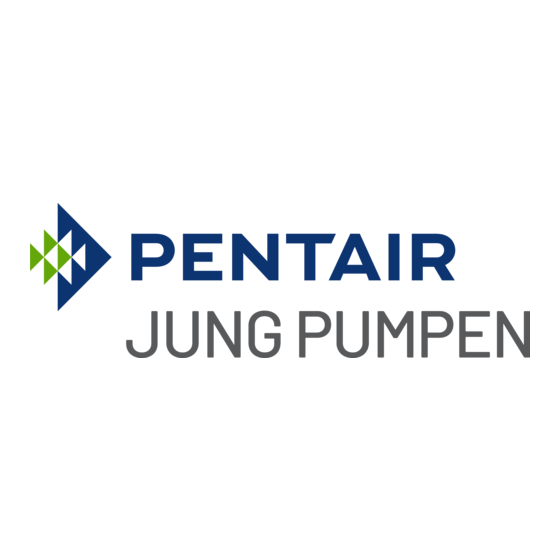
Advertisement
INSTALLATION SHOULD ONLY BE CARRIED OUT BY FULLY QUALIFIED PERSONNEL, ENSURE
ELECTRICAL SUPPLY IS ISOLATED BEFORE STARTING INSTALLATION WORK
1.
Remove lid from tank and inspect both the tank and lid for any damage caused in transit, also check pump and alarm unit if
applicable, if all ok then the Tank is then ready to be installed.
2.
All inverts should be brought into the tank using appropriate tank connectors.
3.
All inverts should be connected to the tank by drilling into the tank at the highest possible level from floor - no lower than
200mm to centre of hole from floor. (This is to be a minimum of 300mm with a Jung US73 pump and 220mm with a Jung
U6K Niro pump). An optional low level float is available for the pumps to enable lower starting/stopping heights if the above
minimum inlet heights cannot be attained.
4.
No tank connections should be fitted through the lid of the tank, as this inhibits removal of the lid for inspection and cleaning
purposes.
5.
The Sumo tank should also be positioned so as to allow easy removal of the lid for inspection and maintenance of pump and
tank.
6.
When positioning the inlet pipe, ensure that the inflow of water/waste is not directed onto the float switch/arm mechanism of
the pump or control system (optional).
7.
It is essential that a compression fitting is installed between the non-return valve supplied and a gate valve in the discharge
pipework (by installers) to enable the removal of the Sumo tank if required.
8.
Slow radius bends MUST be used for every change of direction of the discharge pipework.
9.
The discharge pipework must NOT be connected to a soil stack, manhole etc. which is below the discharge level of the tank,
as syphoning may occur, preventing proper operation of the system.
10.
The tank should be vented to air, with 1¼" pipework minimum. If glasswashers or commercial/industrial dishwashers/
washing machines are used, it is recommended that a least a 2" vent is taken to air, this is in addition to the charcoal vent that
is located on the lid of the unit, (vent replacement should be undertaken at least every six months).
11.
After connecting the tank with the relevant discharge pipe and vent pipe, ensure that the pump is still sited correctly within
the tank, that the float switch is free to move through its full range, and any cables are not loose within the tank.
12.
If a high level alarm unit is fitted to the lid of the tank, ensure that the alarm is free from obstructions and test the alarm
(power to the alarm will need to be on for testing, unless the alarm is fitted with the optional back up battery system) to
ensure correct operation. See instructions relating to the alarm for alarm details (Ref: PTS.SA1).
13.
The operating instructions (supplied separately) for the fitted pump are also to be adhered to as part of the operation of the
Sumo unit.
14.
When refitting the lid ensure the seal is seated correctly, and that all screws are fully tightened.
15.
PLEASE NOTE – we recommend you advise your clients that the sumo tank should be regularly inspected and cleaned.
Our service department will be pleased to offer a quotation for this if they wish.
I
F YOU WISH TO PLACE AN ORDER
Ref: LOG/AP/I&O-SUMO/1006
I
NSTALLATION
S
W
UMO
ASTE
P
LEASE CONTACT OUR
I
NSTRUCTIONS FOR A
W
P
ATER
ACKAGED
,
OR HAVE ANY ADDITIONAL QUESTIONS
S
D
ALES
S
YSTEM
EPARTMENT
,
Advertisement
Table of Contents

Subscribe to Our Youtube Channel
Summary of Contents for Jung Pumpen Sumo
- Page 1 No tank connections should be fitted through the lid of the tank, as this inhibits removal of the lid for inspection and cleaning purposes. The Sumo tank should also be positioned so as to allow easy removal of the lid for inspection and maintenance of pump and tank.
- Page 2 If an alarm is fitted to the lid of the Sumo system, ensure that the alarm is free from obstructions and test the alarm (power to the alarm will need to be on for testing unless the alarm is fitted with the optional back up battery system) to ensure correct operation.




Need help?
Do you have a question about the Sumo and is the answer not in the manual?
Questions and answers